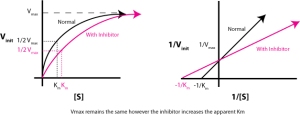The following is a review on a published article, “The Effect of Enzymes on Digestion.”, by Michael R. Bedford. Please note that his writings dealt with digestion in Birds.
Contrary to popular belief, that nutrients are always fully digested and absorbed in the blood stream, it is very unlikely that they ever do. Nutrients digestibilities vary between different dietary substances, however there are fours processes that help aid with digestibility. These four mechanisms are:
- Deteriorating the cell wall
- Destroying ANF’s (supplements)
- Supplying the Host’s Enzymes
- Using intestinal bacteria
Destroying the cell wall.

Taken from www,newscenter.lbl,gov.
In this mechanism, Beta-glucanase, an enzymes, was used to break down the complex cell wall, rapidily allowing amylases and proteases to break down the cell’s content.
Getting rid of the ANF’s.
ANFs’ are supplements such as, non-starch polysaccharides, proteins, and amino acids.
It was observed that Beta-glucanase turned out to be soluble in barley. This was due to the Beta-glucan component being dissolved completely by the endosperm of the cell wall. ANF’s create viscosity, which reduces the effect of enzymes. Enzymes used to reduce intestinal viscosity are believed to improve digestion in the intestinal tract.

Viscosity. Taken from photos.runics.com
Supplying the Host’s Enzymes.
Latest investigations has lead researchers to believe that the digestive tract may not have adequate enzymatic and absorption capacity to deal with all kinds of diets. However, work done by Bedford and Classen, proves that by adding the host enzymes, through means of supplements do in fact increase the rate at which these substances are digested.
Microbial presence?
The are millions of microbes present in your digestive tract. These microbes aid in digestion by breaking down the digestive substances to feed their own needs and produce, in some cases, helpful by products. Evidence to support the presence of microbes in our digestive tract is due to the presences of their by products in faeces.

Bacteria on the walls of the intestines
References.
Bedford. Michael. R. 1996. ” The Effects of Enzymes on Digestion.” The Journal of Applied Poultry Research. Applied Poultry Inc, 1996. Accessed on April 11 2013.
Classen, H.L, T.A. Scotl, G.C. Irish, P. Hucl, M, and M.R Bedford, 1995.”The relationship of chemical and physical measurements to the apparent metabolize energy (AME) of wheat when fed to broiler chickens with and without and enzyme source”.Proc. of 2nd European Symp. on Feed Enzymes, Pages 65-77 Noordwijkerhout, NL. Accessed on April 11 2013.














